
Tactics You Need To Use When Planning A Career Fair
Colleen Casey of Devex, a global development community, shares her tips.
There is a lot of expectation from attendees when they sign up for a career fair. They put hope and trust in you as an organiser. Job hunting is as tough as the steak that my mother “cooks” and, unfortunately, there are umpteen career fairs out there that don’t make it much easier.
Attendees are packed into a stuffy venue. They queue for too long to get a leaflet from a recruiter that’s too busy to talk to them but says, “here’s a free keyring.” Why should an attendee have to print out their resumé if they already paid to attend the fair? Isn’t it a tad cheeky to expect them to fork out more to do that, especially if they are unemployed? Wouldn’t it be refreshing to create a careers fair that puts its attendees needs first?

Colleen Casey, pictured above, works on the membership team of Devex. To quote Wikipedia, “Devex is a social enterprise and media platform for the global development community. Devex aims to connect and inform development, health, humanitarian, and sustainability professionals through news, business intelligence, and funding & career opportunities in international development.”
Every year Devex runs a career fair in Washington D.C. that attracts roughly 900 attendees. She shared what makes it an annual success and how they go about planning a career fair:
Effective Third-Party Integrations
A combination of effective marketing automation and event software tools helped bolster efficiencies for Devex. Colleen and her team have chosen (much to our humility) Marketo and Tito:
“Tito makes it easy to duplicate an event, including the messaging. Before using Tito we were doing everything within Marketo. Marketo does a great job, but it’s not intrinsically an event registration system. So, for many years we were trying to make it work. We were pretty much hacking it together. We still host all our landing pages on Marketo, but using Tito has definitely helped cut down on the time it took to navigate the user to the ticket purchase, and also cut down on the testing time.”
Of course, there are many options for both systems that fit for different teams, but a recent Tito customer survey revealed that Tito saves event organisers 73% of time compared to other event software, in case you’re curious as to how Colleen made her choice.
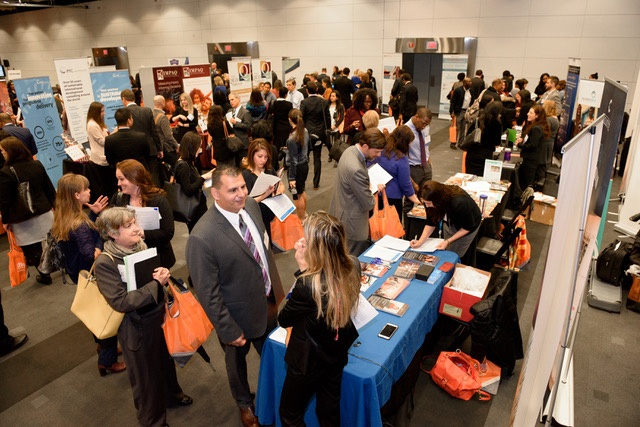
Key takeaways:
- You need an event registration system that can sync with your marketing automation system.
- Duplicating your event via an event registration system is a quality time saver.
Are Career Fairs a Good Inbound Marketing Strategy?
Marketo, aside from their software, are also highly regarded for their research reports on marketing professions and the marketing industry.
According to them, the highest quality leads come from tradeshows and live events, but has Colleen’s experience reflected that?
“For us, events haven’t been an all-out success in lead generation. However, we have many different sides to our business line. So, in addition to a recurring membership, we also have news reporting, recruiting services, job-seeking services and digital partnerships. The events have been a great way to combine all those different areas into one. Devex is a media platform and a hub for those working in global development. The events have helped connect people face to face. Events have helped strengthen our current community. That’s where we’ve really seen the most success.”
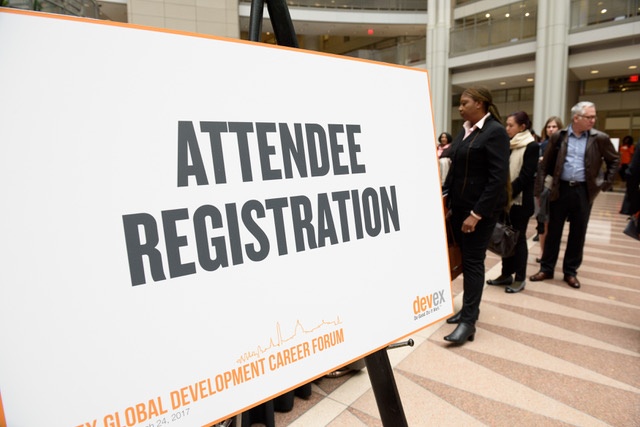
Key takeaways:
- Career fairs show mixed lead generation success.
- Events are a marketing tactic that should be combined with content marketing.
- Events act as a community builder and allow you to test your content pieces offline.
Communiation Strategy for Career Fairs
If you use a marketing automation platform like the folks at Devex, you can use your content to nurture prospects that display the typical behaviours of job seekers:
“Primarily we use email via Marketo. We’ll start emailing out invitations to two different audiences. One will be to the current members of our online community – they receive free entry to the event. The other will be to our non-members, or prospects.
We send ten rounds of invites between the start of the marketing to the end. For people who have already registered, we send four to five update emails that will give tips to the registrant on; how to prepare on the day of the event, CV rating tips, what to wear, how to get to the venue and what exhibitors we have lined up.
We do the same thing for the exhibitors, but at a lesser volume. We try to do more personal emails between our account managers and them. We use Tito for the acceptance and rejection emails.”
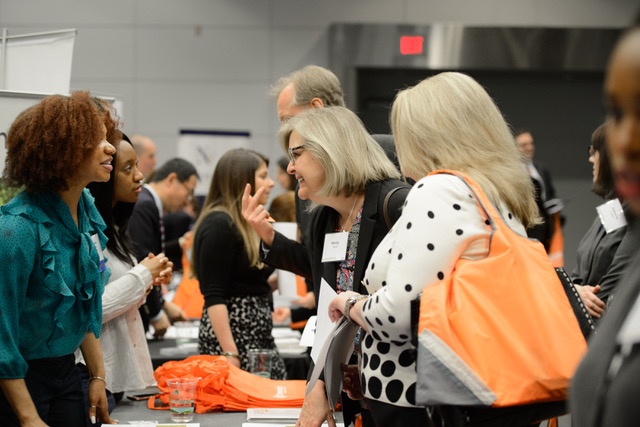
Key takeaways:
- Use an email system that allows you to see the analytics.
- Divide your audience into; registered, prospect, and exhibitor.
- Tailor your volume and content to your audience. For example, send people that have registered five emails that vary from CV tips to what to wear to the event.
Resumé Gathering Strategy
As mentioned at the start, attendees at career fairs should not be expected to print off hundreds of copies of their resumé. They also should not feel that they are wasting their time at an oversubscribed event that doesn’t allow them one-on-one time with recruiters. Colleen uses a very smart approach to remedy this:
“It’s important that attendees are vetted. We have a global recruitment team that goes through each application.
The application includes the person’s resumé, and areas that they are interested in. The candidates we work with must have at least seven years’ experience. Our career fair is for mid-level, global development professionals who are either looking to make a career change or looking for the next organization to work in within global development.
We do a lot of parsing of information beforehand. All of the CVs are then put on to a flash drive under a particular industry. Our recruiters are then able to look at just that specific pool of people.
The vetting process has been the biggest change for us since switching from Marketo to Tito. Before, people were uploading their CVs on to our internal system, and we were doing a lot of follow-ups. We weren’t requiring all the information up front. People were emailing CVs, and there were large Google Docs trying to collect all of them. It was a very manual process and a big headache!
Tito designed a file upload capability. We are now able to have the user upload their resume directly while they’re in the payment process. That then syncs to our internal system so that their profile on Devex is updated with that most recent CV. Then our global recruitment services just have to go into Tito. They can see an exported list of every registrant, and a link to their CV. They’re able to get them and just change their status directly in the system.”
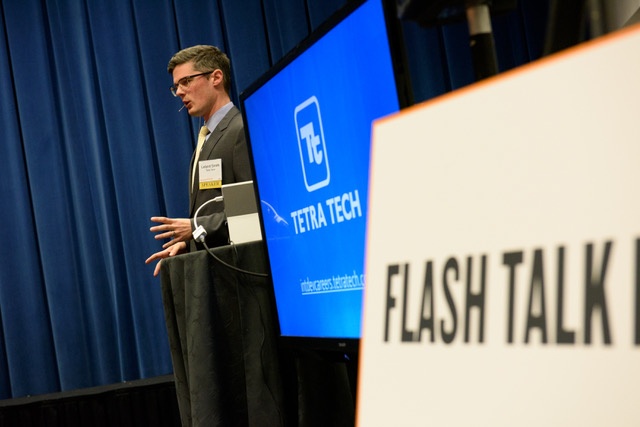
Key takeaways:
- Incorporate a CV/resumé upload requirement into the event registration process.
- Ask attendees what their career interests are; glean as much information as possible at the registration stage.
- Have an extensive vetting process. If a recruiter feels that the attendee is not a good fit for the career fair, refund the attendee.
- Categorise the CV’s/resumés into industry areas.
Succesful Tactics for the Day of the Career Fair
Devex’s career fair starts at noon and continues until five or six. They usually have 50 exhibitors. They each have their own booths, and they’re usually staffed by two to three people from that organization.
“We send the recruiters the job seekers’ CV’s prior to the event. They’re then able to do further shortlisting on their own. We invite the job seeker to come an hour early to meet with that particular recruiter in a separate private room. It guarantees the recruiter a chance to talk to the job seekers that they are interested in because it’s such a busy day. It also makes that job seeker feel a little bit more important.”
When the rest of the job seekers arrive they have food and drink available for them:
“In the corners of the room there are TEDx style talks that are given by an exhibitor or sponsor.”
In addition to that, Colleen talks about a CV writing service, “in a separate room we offer a CV-rating service. We have some consultants and our own internal CV writers available. People can bring their hard copy CV. We will have someone go through it right there with a pen making suggestions on things to change.”
Now that’s a valuable service to provide! Even if the attendee isn’t successful in securing a job at their career fair, they’ll will have equipped them for future success and are creating some lovely karma.
Finally, they end the day with a drinks reception. It allows people to unwind and to continue talking, “but not with a table between you.”
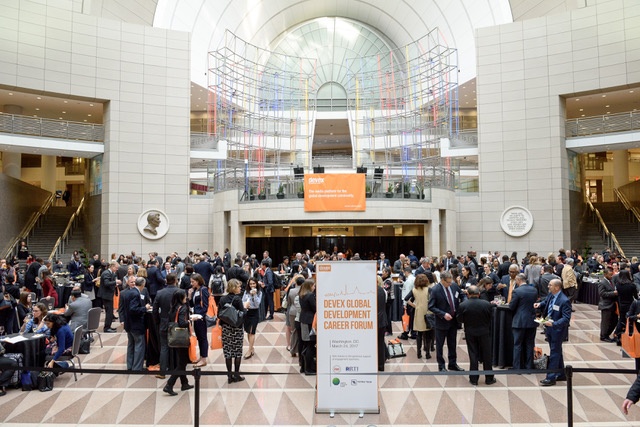
Key takeaways:
- Allow exhibitors/recruiters to see the attendees’ CV’s ahead of time.
- Allow the exhibitors/recruiters to create a shortlist of job seekers that they would like to speak to before doors to the event open. Ask the shortlisted attendees to arrive an hour before doors open.
- Have food and drink available for the job seekers.
- Have several small stages for TEDx style talks that stay within your event theme.
- Have a separate room for CV analysis. Give the job seeker the option to bring a hard copy of their CV/Resume for a recruitment expert to critique.
- Finish the event with a drinks reception. Job hunting is exhausting so allow your attendee to wind down.
Modernise Your Career Fair
Too often career fair organisers focus on numbers. They confuse a busy venue with success, or they knowingly take advantage of a job seeker’s ability to put up with a poor experience in the hope that they will secure a job at it.
Devex have developed an approach that is compassionate to the job seeker. Admittedly, they are targeting mid-level executives but their focus on order and resumé vetting is something that any careers fair can do. Categorise the job seekers. Your exhibitors with be grateful for it and in turn more willing to participate the following year.